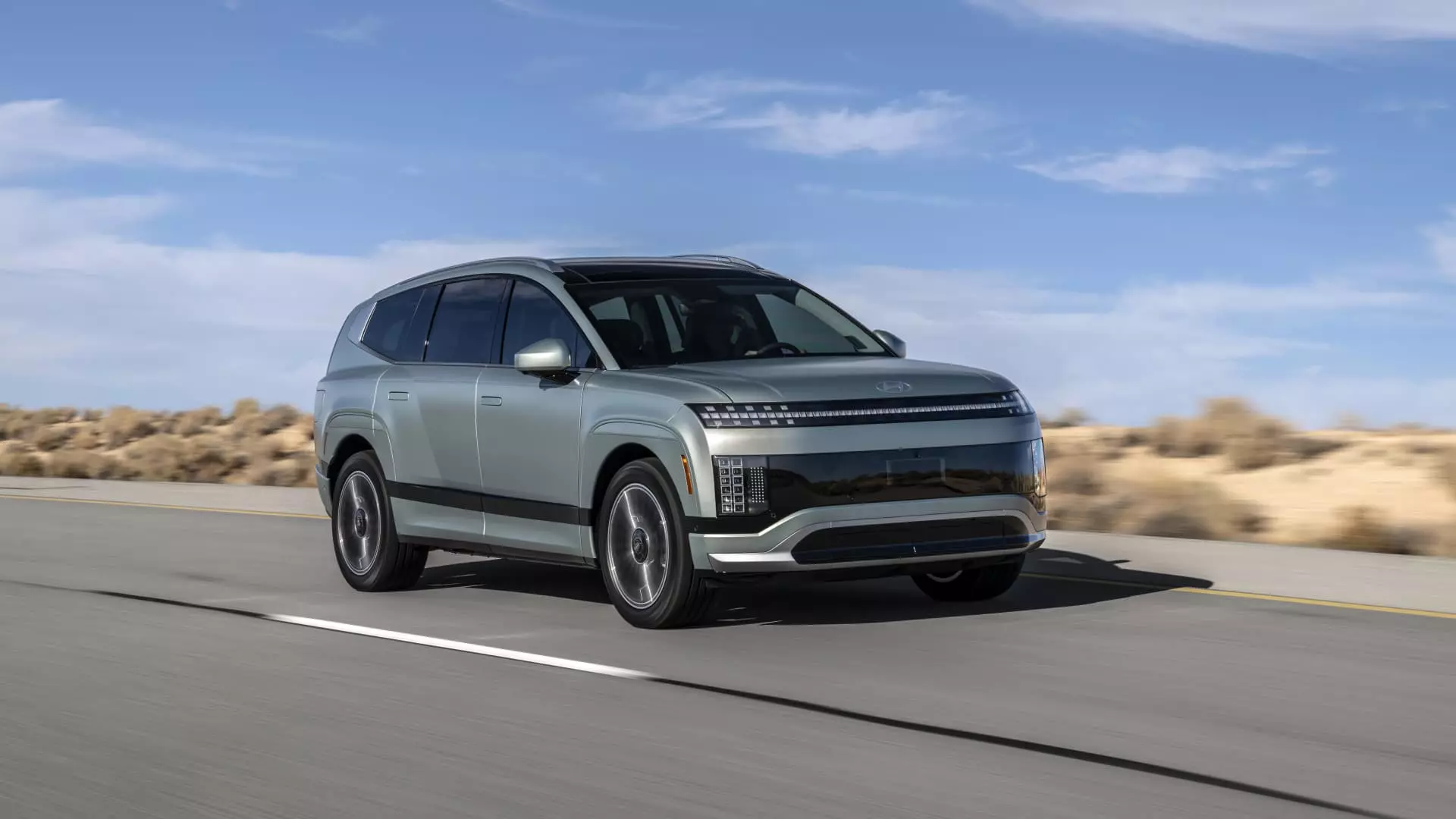Hyundai continues its commitment to electric mobility with the introduction of the Ioniq 9, an exciting addition to its growing lineup of electric vehicles (EVs). Slated for a spring release in the U.S., the Ioniq 9 stands as the company’s largest EV to date, boasting three rows of seating capable of accommodating up to seven passengers. This strategic move aims to capture a significant share of the family-oriented SUV market, aligning with a broader trend towards electrification in the automotive industry.
Performance and Range
One of the standout features of the Ioniq 9 is its impressive performance metrics. With an anticipated range of around 335 miles on a single charge, it positions itself as a strong competitor for consumers who prioritize long-distance travel freedom. The vehicle’s rapid charging capability, allowing for a charge from 10% to 80% in just 24 minutes, underscores Hyundai’s commitment to convenience in the EV experience. With a sprint from 0 to 60 mph achievable in a swift 4.9 seconds, it exemplifies the blend of utility and performance that modern drivers seek.
While Hyundai has yet to announce the official pricing for the Ioniq 9, some insights can be drawn from its sibling model, the Kia EV9, which starts around $55,000. This pricing strategy suggests that Hyundai aims to position the Ioniq 9 competitively within the mid to upper SUV market segment, potentially appealing to segments of consumers that are eager to transition to electric without sacrificing space or comfort.
In terms of aesthetics, the Ioniq 9 features a strikingly different exterior design compared to both the Kia EV9 and the smaller Hyundai offerings like the Ioniq 5 and Ioniq 6. This differentiation in design elements not only enhances its visual appeal but also helps establish a distinct identity within Hyundai’s electric vehicle family, aiming to attract diverse consumer preferences while promoting brand recognition.
Hyundai’s decision to proceed with the launch of the Ioniq 9 despite the slower-than-expected EV adoption rates reflects its unwavering confidence in the future of electric mobility. The automaker has committed to an ambitious goal of developing a portfolio of 23 EV models by the year 2030, showing dedication to a multifaceted approach to electrification. Currently, Hyundai and its sister brand, Kia, stand second in EV sales volume within the U.S., trailing only Tesla. This indicates a robust market presence that could be further augmented by the Ioniq 9.
Production of the Ioniq 9 will take place at a state-of-the-art facility in Georgia, established as part of Hyundai’s expansive investment in U.S. manufacturing. The upcoming release is not just a domestic effort but is also foreshadowed to engage international markets, with a planned rollout in Korea and Europe following its American debut. Such comprehensive strategies highlight Hyundai’s holistic view on EV deployment, aiming for a well-rounded and global market impact.
As the automotive industry shifts toward electrification, the 2026 Hyundai Ioniq 9 is poised to make a noteworthy entrance, blending practicality, performance, and design into an appealing package. Hyundai’s commitment to EVs, alongside a clear strategy for its future, underlines the potential of the Ioniq 9 to resonate with consumers looking for a reliable and modern electric SUV.

